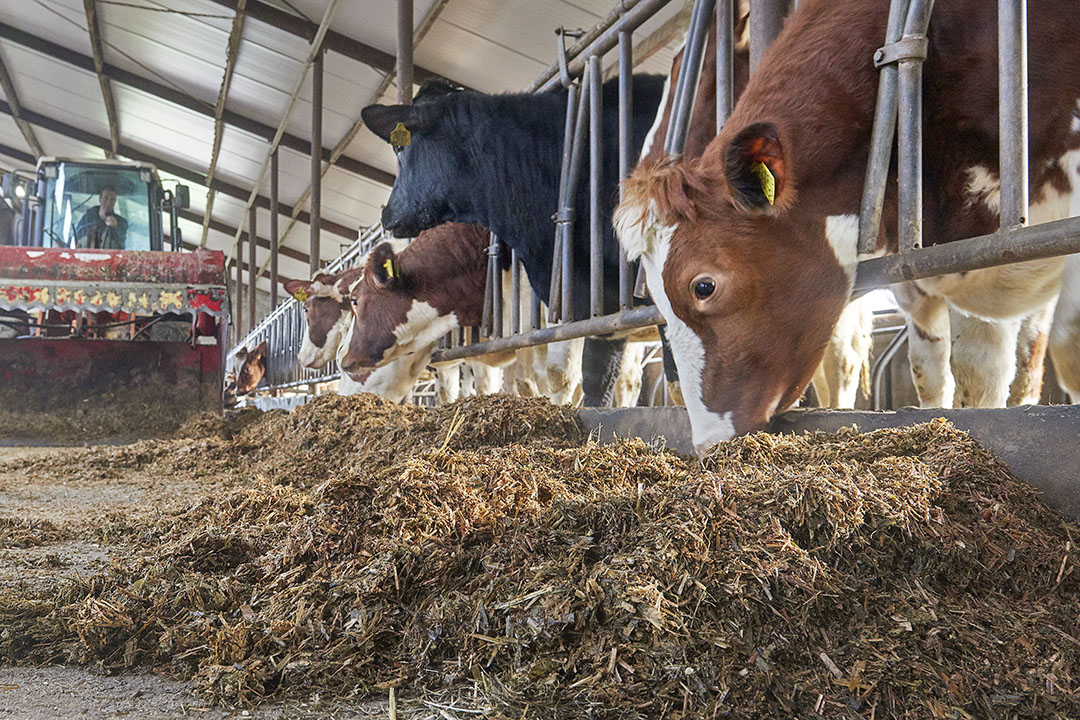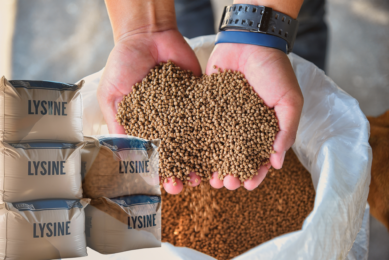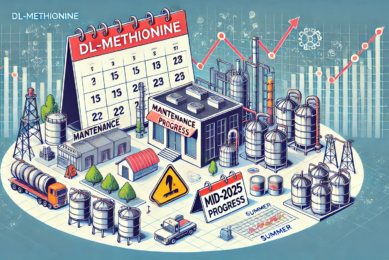A new era in amino acid balancing

Research has shown that Amino Acid (AA) balancing is important for ruminants and that a combination of Lysine (Lys) and Methionine (Met) is required. The focus has now turned to the importance of maximising microbial protein production and the use of high-quality rumen undegradable protein.
Both Met and Lys ensure that higher quality metabolic protein reaches the small intestine. As Met and Lys are limiting amino acids in all types of diets across Europe, it is imperative to use Rumen Protected (RP)-Met and RP-Lys in moderate crude protein ruminant diets.
New technologies needed
Recent technological advances have been developed to protect Met and Lys from microbial degradation, allowing the RP-AA to pass to the abomasum and small intestine. Research is evaluating different methods for quantifying ruminal AA escape and for measuring ruminal outflows and digestibility. This provides us with a reliable characterisation of the RP-AA matrix. However, producing products with both excellent protection from ruminal degradation and high intestinal release is not easy. Another critical factor is the stability of those supplements in a feed matrix or within a total mixed ration (TMR). Feed additive manufacturers have developed processes that reduce the degradation rate of amino acids in RP-AA, but they still struggle to balance low ruminal degradation with high intestinal digestibility.
Also read: Fewer antibiotics make more economic sense
Key features of a RP-AA
An effective RP-AA must be stable during grain mix preparation, when mixing feed and in the ration. It must survive the passage through the mouth (mastication, salivation), releasing little amino acid in the rumen and passing quickly into the omasum. Reducing the mean retention time in the rumen by varying the size and density of particles is a promising way to increase the rumen-undegraded protein and thus improve effectiveness.
The key features of a rumen-protected amino acid are:
- Coating technology: allowing a high degree of rumen protection and intestinal absorption
- Core technology: physical characteristics such as size and functional specific gravity influence the rumen retention time
- Homogeneity: the RP-AA must be mixed homogeneously and be free flowing with no segregation in the TMR, premixes or in the rumen.
- Spheronisation: this feature is essential for high stability when the product is mixed, in order to avoid external abrasions.
Even with the same technology protection, the difference in the actual core technology creates a 16% improvement in intestinal bioavailability, due to better spheronisation, particle size (PS), specific gravity (SG) and homogeneity. If we increase the PS, the retention time increases exponentially on a linear response curve. The functional SG particles with densities of 1.2 to 1.3 were retained for the least time in the entire digestive tract and rumen.
Next generation
Kemin has focused its research on optimising RP-AA on these four key features, resulting in a new in-house developed RP-Met range Kessent®. The RP-Met Kessent M provides a new protection grade, which guarantees both a high rumen protection rate and intestinal bioavailability, thanks to unique core technology. The PS and SG have very low standard deviations, allowing for a high rumen escape with a very high level of intestinal bioavailability. The spheronisation gives the product a higher stability in TMR conditions even after 24 hours of incubation. The high homogeneity of the product makes it possible to add it to premixes and feed formulations.
Also read: Better safe than sorry
Precise measurement
Precise accurate measurement techniques are imperative for obtaining reliable experimental results in relation to N and AA utilisation. Knowing the rumen protection rate and intestinal availability of the RP-AA supplement gives us the primary AA availability to the host animal. The metabolisable AA delivery can be estimated using in situ, in vitro, or in vivo techniques, each with its inherent advantages and disadvantages. The in-vitro techniques may provide satisfactory accuracy for comparative purposes, while the in situ methodologies are widely used to estimate ruminal degradation of dry matter (DM) and (CP). In vivo trials are the most logical and desirable evaluation method, but additional techniques are required.
The 2 other types of trial which are crucial in determining the most reliable RP-Met or Lys supplements are:
- Stability tests – for an RP AA product to be efficient the stability must be maintained in feeds and TMR.
- Predictable response test – to estimate the relative bio-availability of RP AA to measure changes in milk or casein composition, as the most influenced milk protein fraction.
Figure 1 – In vitro stability of different RP Met at 0, 2, 4 and 24 hours at TMR conditions (Met leakage).

Kessent M provides reliable information at every stage of all of these techniques. Measured with in vivo trials and confirmed with both in situ and in vitro methodologies, intestinal bioavailability has been proven to be higher than 80%. Another critical issue is stability under field conditions. The high stability of the product after TMR incubation (Figure 1) and mixing (Figure 2) with additional feed ingredients is remarkable.
Figure 2 – In vitro stability at 0, 2, 4 and 24 hours for different RP-Met mixed with a commercial premix (Met leakage).

Author:
Diego Martínez del Olmo, Kemin











